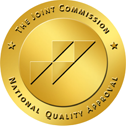Many people in rehab suffer from a dual diagnosis of a substance abuse problem and a mental health issue such as anxiety disorder. Sometimes the substance abuse problem arises as a way to cope with the intense feelings of anxiety, and other times anxiety and other mental health symptoms arise because of the use of drugs and alcohol. Regardless of which comes first, the chances of recovering from either disorder is very slim unless both co-occurring disorders are simultaneously treated in dual diagnosis rehab.
Types of Anxiety Disorders Treated in Dual Diagnosis Rehab
There are many types of anxiety disorders, but the anxiety disorders most commonly seen in substance abuse treatment are:
* Post Traumatic Stress Disorder (PTSD)
PTSD can occur after an individual experiences a horrific event or series of traumatic events. PTSD results in psychological disturbances that include flashbacks, physical sensations, nightmares, emotional numbing and avoidant behavior.
* Obsessive Compulsive Disorder (OCD)
Individuals with OCD are obsessed with unwanted thoughts and impulses to perform repetitive and ritualistic behaviors that relieve the discomfort or anxiety caused by the obsession. These obsessive thoughts are difficult to ignore and often revolve around themes of losing control, becoming contaminated, sex, violence or religion.
* Body Dysmorphic Disorder (BDD)
People with BDD are preoccupied with one or more “defects” in their appearance that most people hardly notice or don’t even see exist. This obsession with their body causes significant stress, interrupts their life, and can lead to compulsive behaviors such as repeatedly checking their appearance in the mirror and avoiding situations that provoke anxiety.
* Panic Disorder
Panic Disorder is characterized by unexpected and repeated episodes of panic attacks. Panic attacks are sudden rushes of intense fear and anxiety that seem to occur for no apparent reason and are accompanied by physical symptoms that mimic a heart attack (such as chest pain, racing or pounding heart, shortness of breath or dizziness). Other symptoms of a panic attack are: sweating, shaking, nausea, fear of dying, fear of losing control, and feelings of unreality.
* Social Anxiety Disorder (Social Phobia)
Social Anxiety Disorder, also known as social phobia, is an intense fear of being embarrassed, humiliated or negatively evaluated in a social situation. It’s more than just feeling shy or nervous; the anxiety of these situations is so intense and uncontrollable that a person suffering from social phobia will go to any lengths to avoid situations that may trigger it. Social phobia can be limited to particular situations, such as public speaking, or it can be encompass all sorts of activities, including speaking to strangers, using a public restroom, talking on the phone, or even writing in front of other people.
* Generalized Anxiety Disorder
Individuals with Generalized Anxiety Disorder experience chronic and exaggerated worry and tension, even when nothing is wrong. Individuals with GAD may realize they are exaggerating the seriousness of a situation, but are helpless to stop the worry and are often unable to relax. GAD typically develops over time, usually beginning in adolescence.
Dual Diagnosis Treatment for Anxiety Disorder
Anxiety is a normal reaction to stress, but an anxiety disorder completely disrupts a person’s life. Mix this disruption with a drug or alcohol addiction, and the combination can be completely destructive.
If you have a problem with drugs or alcohol and have symptoms of an anxiety disorder, the first thing you need to do is enter a detoxification program at a dual diagnosis rehab. Detox will flush your body of all the toxins left behind by your substance abuse so that the symptoms of your substance use can be distinguished from the symptoms of your anxiety disorder. After detox you’ll enter a residential treatment program that includes individual therapy, group counseling, and a 12-step program to address your substance addiction.
At the same time you’re receiving substance abuse treatment, you’ll also receive treatment for your anxiety disorder. This often includes medications such as antidepressants and mood stabilizers in addition to cognitive-behavioral therapy and/or dialectical behavior therapy. Both therapies will teach you the skills you need to replace your old coping behaviors with new, positive ways to cope with your co-occurring disorders.
If you have a co-occurring disorder of substance abuse and anxiety disorder, there is hope. Dual diagnosis treatment can give you a life free of addiction and the difficult symptoms of anxiety disorder.
Call Casa Palmera today and ask how their dual diagnosis program can work for you.




